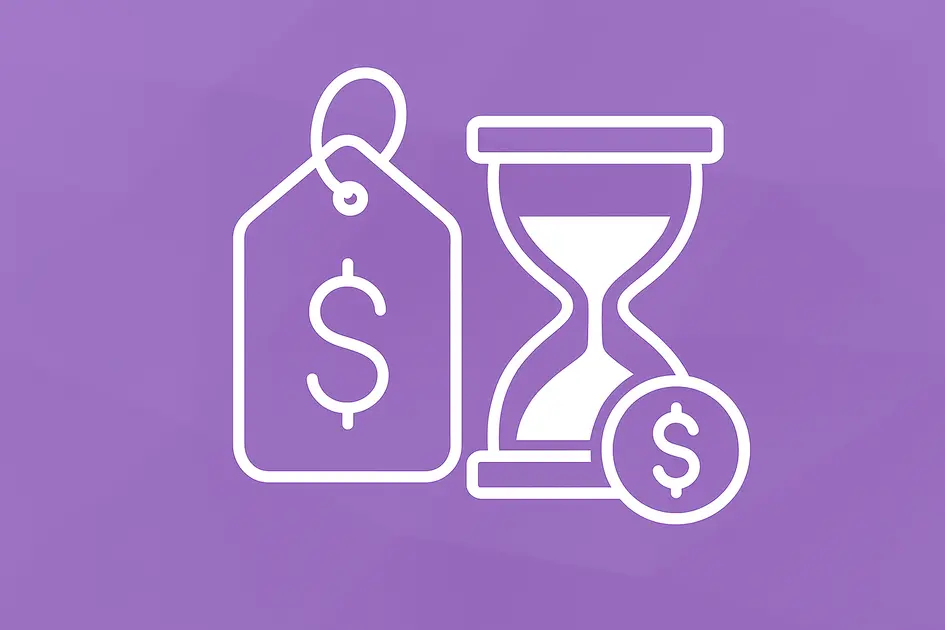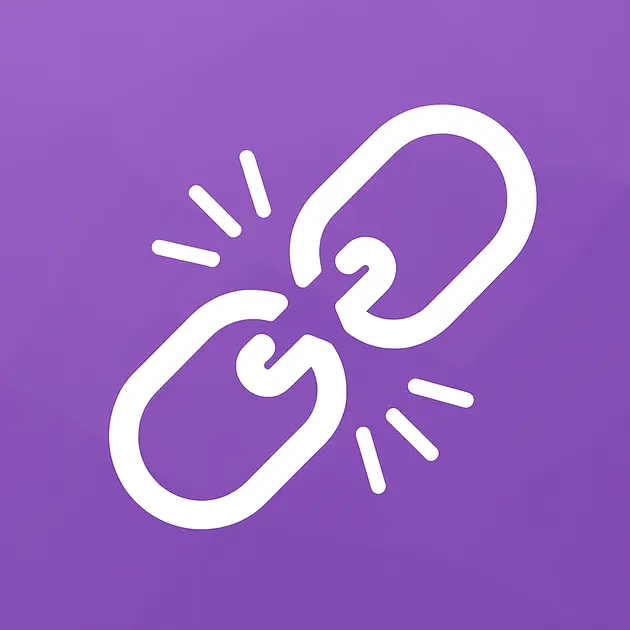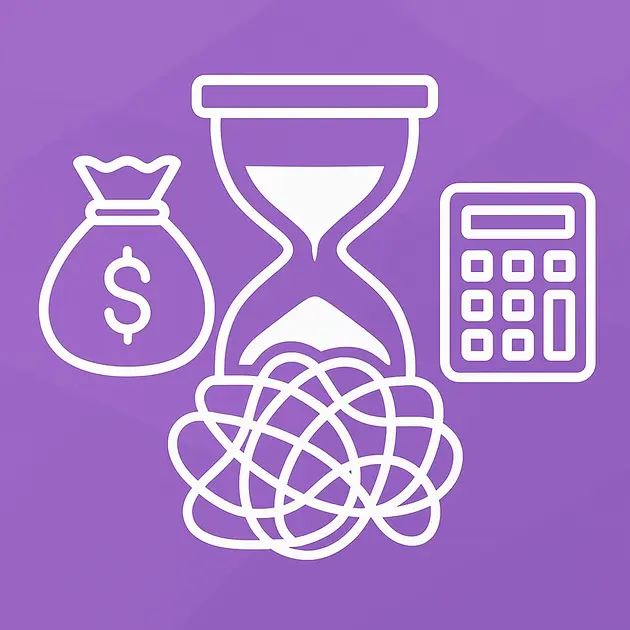When cheap spa software becomes expensive
Discounted software looks appealing when you’re opening your suite or rebuilding your book.
The $25 plan promises online scheduling, “basic” records, and payment links.
But the sticker price rarely reflects the total cost.
Between hidden add-ons, higher processing fees, manual workarounds, and the energy tax of second-guessing every setting, “cheap” software often becomes the most expensive line item in your business.
The illusion of low-cost plans
Imagine signing up for a budget scheduling app. It looks perfect on the pricing page -
one low plan, “everything you need.”
A week later, you realize automated reminders require a marketing add-on, intake forms cost extra, and your “free” website includes someone else’s branding.
To take payments, you’re required to use their proprietary processor with special fees and payout delays.
Suddenly, that $25 plan is closer to $90 -
before counting your time juggling free tools like Google Forms for intake, Shopify for retail, and Wix for your website.
Each “savings” adds complexity, and complexity has a cost.
These hidden costs aren’t always labeled as fees.
Sometimes you pay in hours - manually sending forms, copying notes, or rebuilding reports because integrations don’t sync.
Every workaround chips away at your time - your most valuable resource.
The invisible tax of patchwork systems
When you mix and match multiple tools -
one for booking, one for forms, one for your shop -
you spend more time being the connector than the professional.
Each extra login or CSV export increases the chance of missing something important: a payment, a client’s allergy note, or a rebooking reminder.
What feels “flexible” at first quickly becomes a part-time tech job.
Even when you’re using free tools, the time you spend maintaining them can cost more than a premium subscription ever would.
Saving $20 on software is meaningless if you lose two hours every week syncing data between apps.
Case Study: Maya’s “DIY Mix-and-match tools”
Maya, an esthetician in Austin, decided to “go lean.”
She used a free booking app, Google Forms for intake, a Wix site for her brand, and a Shopify plug-in for retail.
It worked -
until it didn’t.
- $55 monthly on plug-ins and transaction fees
- 5 hours weekly reconciling bookings and inventory
- 3 missed appointments due to double-entry errors
She saved $20 on software but lost over $400/month in time and missed opportunities.
When she switched to an all-in-one platform, everything synced instantly -
no maintenance, no manual updates.
The hidden costs you can’t ignore
Let’s break down a typical scenario for a solo esthetician earning around $12,000 per month:
- Processing spread: Low-cost platforms often charge 0.3–0.5% more per transaction. That’s about $600 annually.
- Add-on upgrades: Reminders ($15), forms ($10), reporting ($20), and brand removal ($15) bring a $25 plan up to around $80–$100/month.
- DIY integrations: Using free tools like Google Sheets or Wix means 60–80 hours of admin time annually. Valued at $60/hour, that’s $3,600–$4,800 in opportunity cost.
- Lost revenue: Missing one $150 booking each week due to poor reminders equals $7,800 in unrealized revenue per year.
Even if you cut those numbers in half, the “budget” solution still costs thousands more in hidden time and missed opportunity.
The real cost isn’t dollars - it’s momentum
When software slows you down, you stop experimenting.
You avoid creating new packages or updating your prices because every change means another setup page, another export, another sync.
Cheap tools create invisible friction that keeps you from growing.
Instead of focusing on treatments and retention, you’re troubleshooting why your intake form isn’t linking to your booking system.
Practical playbook for evaluating true cost
- List non-negotiable features. Booking, deposits, reminders, notes, and reporting should be included, not optional.
- Check processing rates. Small differences (2.9% vs 3.1%) add up fast. Ask about payout times and card fees.
- Watch for add-ons. Essentials like forms, memberships, or branding should not require upgrades.
- Count your hours. Track how much time you spend fixing imports, emails, or reports. Multiply by your hourly rate.
- Test support. Submit a real ticket and note response time - delays cost clients.
- Model for growth. If you double your revenue, does your plan double in cost? Some platforms scale pricing aggressively.
Protecting your client experience
Cheap software doesn’t just cost you money -
it affects how clients perceive your brand.
Ads or third-party branding in booking confirmations make your studio look less professional.
Generic language in reminders breaks trust.
The American Med Spa Association notes that consistent branding directly influences client loyalty.
Security matters, too. Free or budget tools may skip audit logs or multi-factor protection, increasing risk if you share access.
The Federal Trade Commission reminds small businesses to secure client data -
something easier when your system is unified and encrypted.
Why all-in-one matters
When your software works together, it starts working for you.
Every appointment, note, and product sale connects behind the scenes -
automatically, not manually.
Instead of guessing what clients might want, your system gently suggests it for you.
SpaSphere’s Intelligence doesn’t “track” people, it learns patterns that help you serve better.
If a client usually books a facial every six weeks and purchases a serum afterward, the system reminds you when it’s time to reach out -
or nudges them to rebook on their own.
It’s not data mining; it’s thoughtful timing.
Because everything -
bookings, payments, forms, and retail -
lives in one place, your insights are instant and meaningful.
You see what services pair well together, what products drive repeat visits, and where small changes can grow your revenue without extra effort.
The result?
More returning clients, more retail sales, and more time for you - without any spreadsheets, third-party tools, or guesswork.
That’s the difference between software you work in and software that works for you.
Wrap-up: invest where it counts
Your software should behave like an invisible business partner - anticipating your needs, supporting pricing strategy, and helping clients return more often.
An all-in-one platform designed for estheticians includes AI prompts, secure notes, payments, inventory, and branded communications for a single predictable rate.
What you save in time and frustration often exceeds what you spend in dollars.
If you’re ready to stop chasing add-ons and start scaling confidently, explore how SpaSphere’s transparent, all-inclusive plan keeps every tool you need - already included.
Continue learning with the hidden cost of juggling spa software and why fragmentation kills client experience.




